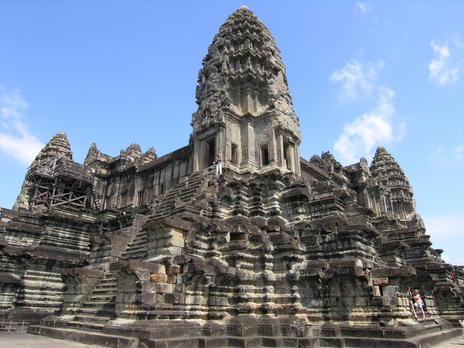Ashwin Krushnapaksha 7, Kaliyug Varsha 5114
 |
The massive sandstone bricks used to construct the 12th-century temple of Angkor Wat were brought to the site via a network of hundreds of canals, according to new research.
For many years, scientists have thought that 5-10 million stones used for building the temple were taken through a 54-mile river and canal route. But the latest satellite images have discovered series of previously undiscovered canals that lead to this ancient complex.
Academics now believe these canals would have allowed the bricks and stones to be carried from nearby quarries through this much shorter 22-mile route. This ‘short-cut’ route explains us how this 500-acre temple was constructed in just few decades. The king Suryavarman II of Khmer Empire started work for this temple, in 12th century, in the capital city of Angkor, in what is now called Cambodia. The temple was constructed to honour Hindu god Vishnu. Later, the Hindu temple was converted into a Buddhist temple after several hundred years.
This huge temple complex is constructed from 5-10 millions of sandstone blocks that weigh up to 1.5 tons, cut from the quarries found at the base of the nearby Mountain Kulen. The temple was built during the rule of just one king, which raises the question of how so many stones were transported from the sacred mountain to the temple site in just a few decades.
With the help of the satellite images, Estuo Uchida of Japan’s Waseda University and an archeological team has discovered 50 mountain quarries with a huge network of canal and roads that connected with the temple to Mount Kulen. The canals decrease the total distance used by the builders of Angkor Wat to travel to just 22 miles. This shortcut canal route would have helped the builders a lot in creating this grand religious construction.
Angkor Wat, also known as the “temple city,” is one of the largest religious monuments ever constructed.
Source : Truthdive




